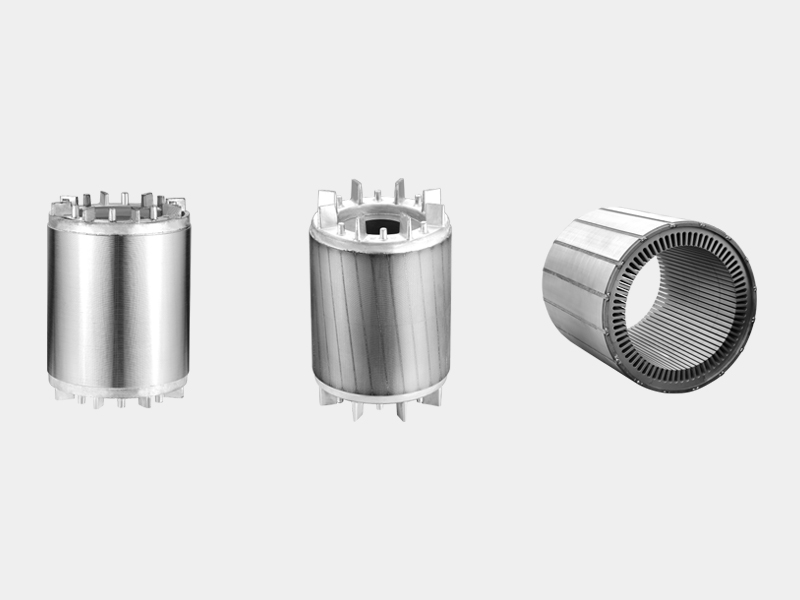Introduction
Electric motors are fundamental components in industrial and commercial applications, with the stator serving as a critical element in their operation. The stator, consisting of laminated steel cores and copper windings, creates the rotating magnetic field necessary for motor function. However, stator failures account for approximately 30-40% of all motor breakdowns, leading to costly downtime and repairs. Understanding common stator failures and implementing effective prevention strategies can significantly extend motor lifespan and improve operational efficiency.
Section 1: Common Stator Failures
1.1 Winding Insulation Breakdown
Insulation failure represents the most prevalent stator issue, accounting for nearly 60% of stator-related motor failures. This degradation occurs through several mechanisms:
- Thermal degradation: Prolonged exposure to temperatures exceeding insulation ratings causes chemical breakdown. For every 10°C above rated temperature, insulation life decreases by 50%.
- Electrical stresses: Voltage spikes and partial discharges erode insulation over time, particularly in medium-voltage motors.
- Contamination: Conductive dust, moisture, or chemicals create leakage paths that compromise insulation integrity.
- Mechanical damage: Vibration or physical impact can damage winding coatings during installation or operation.
1.2 Stator Core Damage
The laminated steel core can experience several failure modes:
- Core lamination shorting: Broken or shifted laminations create eddy current paths, generating localized heating.
- Hot spots: Poor core construction or uneven pressure during manufacturing leads to abnormal temperature rises.
- Magnetic aging: Repeated thermal cycling reduces core material permeability over decades of service.
1.3 Connection Failures
Termination and connection problems cause approximately 15% of stator failures:
- Loose connections: Thermal cycling causes expansion/contraction that loosens terminal connections.
- Poor solder joints: Manufacturing defects or thermal stress lead to high-resistance connections.
- Phase-to-phase faults: Inadequate spacing between phase connections can result in insulation breakdown.
1.4 Mechanical Stator Issues
Physical damage to stator components includes:
- Bearing failure migration: Severe bearing wear releases metal particles that abrade stator windings.
- Frame distortion: Excessive mechanical loads or thermal expansion warps the stator frame.
- Slot wedge deterioration: Aging or vibration causes wedges to loosen, allowing coil movement.
Section 2: Failure Detection Methods
2.1 Electrical Testing
- Insulation resistance (IR) testing: Measures megohm values to detect moisture or contamination.
- Polarization index (PI): Compares 1-minute to 10-minute IR readings to assess insulation quality.
- Surge comparison testing: Identifies turn-to-turn insulation weaknesses through waveform analysis.
- Winding resistance measurement: Detects open circuits or high-resistance connections.
2.2 Thermal Monitoring
- Infrared thermography: Identifies hot spots in windings and connections.
- Resistance temperature detectors (RTDs): Embedded sensors provide real-time temperature data.
- Thermocouples: Measure temperatures at critical points like winding end turns.
2.3 Vibration Analysis
- Spectrum analysis: Detects electromagnetic or mechanical issues affecting stator integrity.
- Orbital analysis: Identifies air gap eccentricity problems that stress stator windings.
2.4 Advanced Diagnostic Techniques
- Partial discharge testing: Detects early-stage insulation deterioration in medium/high voltage motors.
- Motor current signature analysis (MCSA): Identifies rotor-stator interaction problems.
- Core loss testing: Evaluates stator core lamination condition through loop tests.

Section 3: Prevention Strategies
3.1 Design and Selection Considerations
- Proper insulation class selection: Choose Class F or H insulation for applications with variable loads or frequent starts.
- Voltage stress control: Specify form-wound coils with adequate insulation for motors experiencing frequent transients.
- Winding configuration: Dual-voltage designs should use parallel connections only when necessary to reduce connection points.
- Slot fill optimization: Maintain proper balance between copper fill and cooling space.
3.2 Installation Best Practices
- Alignment precision: Use laser alignment tools to minimize vibration transfer to stator.
- Termination quality: Apply proper torque to connections and use anti-oxidation compounds.
- Environmental protection: Install motors in clean, dry locations or use appropriate enclosures (TEFC, WPII).
- Soft starting: Implement variable frequency drives or soft starters to reduce winding stress during acceleration.
3.3 Operational Maintenance
- Load monitoring: Prevent overload conditions that cause excessive winding temperatures.
- Cleaning protocols: Establish regular cleaning schedules using non-conductive methods.
- Lubrication management: Prevent bearing failures that can lead to stator damage.
- Moisture control: Use space heaters in humid environments to prevent condensation.
3.4 Predictive Maintenance Program
- Regular testing schedule: Perform annual IR/PI tests and compare results to baseline data.
- Thermal imaging surveys: Conduct quarterly IR scans of critical motors.
- Vibration monitoring: Install continuous monitoring systems for large motors.
- Oil analysis: Detect bearing wear particles before they migrate to stator windings.
3.5 Repair and Rewind Considerations
- Core inspection: Perform loop tests before rewinding to assess core condition.
- Insulation system upgrades: Use modern insulation materials during rewinds.
- Winding retention: Ensure proper wedging and bracing to prevent coil movement.
- Quality control testing: Perform all acceptance tests after repairs.
Section 4: Special Considerations for Different Motor Types
4.1 AC Induction Motors
- Address voltage imbalance issues that cause uneven heating
- Monitor for rotor faults that can induce stator damage
- Implement proper starting current control
4.2 Synchronous Motors
- Pay special attention to excitation system impacts on stator
- Monitor for hunting oscillations that stress windings
- Maintain proper air gap clearances
4.3 High Voltage Motors
- Implement comprehensive partial discharge monitoring
- Use preventive coil retightening procedures
- Maintain clean, dry insulation surfaces
4.4 Inverter-Duty Motors
- Specify special turn insulation for PWM drive applications
- Monitor for voltage reflection issues
- Implement proper filtering and cabling practices
Conclusion
Effective stator failure prevention requires a comprehensive approach combining proper design, installation, operation, and maintenance practices. By understanding common failure modes and implementing the strategies outlined, facilities can achieve significant improvements in motor reliability and longevity. A well-executed prevention program typically yields a 3-5 times extension in stator service life, providing substantial return on investment through reduced downtime and repair costs. Regular training for maintenance personnel on stator inspection techniques and failure recognition further enhances prevention efforts, ensuring early detection of potential issues before they develop into costly failures.

Copyright © Zhejiang Xinzheng Electromechanical Technology Co., Ltd. All Rights Reserved.
This website uses cookies to ensure you get the best experience on our website.
Comment
(0)